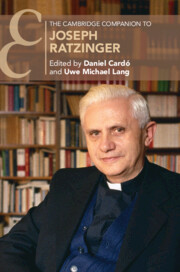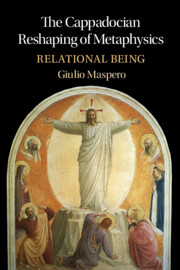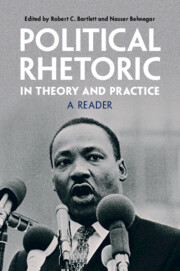Refine search
Actions for selected content:
45 results
2 - St. John Damascene, St. Maximus the Confessor, and the Earlier Greek Fathers on the Instrument Doctrine
- from Part I - Foundations and Statements of the Doctrine
-
- Book:
- The Humanity of Christ as Instrument of Salvation
- Published online:
- 21 August 2025
- Print publication:
- 04 September 2025, pp 31-65
-
- Chapter
- Export citation
Introduction
-
- Book:
- The Humanity of Christ as Instrument of Salvation
- Published online:
- 21 August 2025
- Print publication:
- 04 September 2025, pp 1-12
-
- Chapter
- Export citation
5 - Dubia, Part 2
- from Part II - Difficulties and Resolutions
-
- Book:
- The Humanity of Christ as Instrument of Salvation
- Published online:
- 21 August 2025
- Print publication:
- 04 September 2025, pp 151-172
-
- Chapter
- Export citation
3 - St. Thomas Aquinas on the Instrument Doctrine
- from Part I - Foundations and Statements of the Doctrine
-
- Book:
- The Humanity of Christ as Instrument of Salvation
- Published online:
- 21 August 2025
- Print publication:
- 04 September 2025, pp 66-120
-
- Chapter
- Export citation
Chapter 8 - Plato, Dialogue, and Epistemic Autonomy
- from Part IV - The Limits of Autonomy and Self-Rule
-
-
- Book:
- Platonic Autonomy
- Published online:
- 07 August 2025
- Print publication:
- 31 July 2025, pp 169-190
-
- Chapter
- Export citation
6 - Eradicating Ethos
- from Part III - Façade of Neutrality
-
-
- Book:
- Rhetorical Traditions and Contemporary Law
- Published online:
- 02 May 2025
- Print publication:
- 22 May 2025, pp 119-138
-
- Chapter
-
- You have access
- Open access
- HTML
- Export citation
Chapter 4 - The Mythopoieic Roots of Theology
- from Part II - Myth and Culture
-
- Book:
- Theology and the Mythic Sensibility
- Published online:
- 07 November 2024
- Print publication:
- 21 November 2024, pp 77-89
-
- Chapter
- Export citation
4 - ‘Wishing to Imitate the Poet’: Prose and the Study of Ancient Poetry in the Twelfth Century
- from Part I - Poetry and Twelfth-Century Literary Culture
-
- Book:
- Poetry in Byzantine Literature and Society (1081-1204)
- Published online:
- 17 October 2024
- Print publication:
- 31 October 2024, pp 113-136
-
- Chapter
- Export citation
Chapter 1 - Gorgias of Leontini and Plato’s Gorgias
-
-
- Book:
- Plato's Gorgias
- Published online:
- 25 May 2024
- Print publication:
- 30 May 2024, pp 7-26
-
- Chapter
- Export citation
5 - Strategic Stories (Storytelling II, the Sequel)
-
- Book:
- Compelling Communication
- Published online:
- 30 May 2024
- Print publication:
- 30 May 2024, pp 121-149
-
- Chapter
- Export citation
2 - Ancient Greek and Roman Ethics and Education
- from Part I - Traditions in Ethics and Education
-
-
- Book:
- The Cambridge Handbook of Ethics and Education
- Published online:
- 07 March 2024
- Print publication:
- 14 March 2024, pp 24-42
-
- Chapter
- Export citation

The Cambridge Companion to Joseph Ratzinger
-
- Published online:
- 25 January 2024
- Print publication:
- 21 December 2023

The Cappadocian Reshaping of Metaphysics
- Relational Being
-
- Published online:
- 11 January 2024
- Print publication:
- 09 November 2023
Chapter 2 - Xanthus, Achilles’ Speaking Horse (Equus eloquens)
-
- Book:
- The Trojan Horse and Other Stories
- Published online:
- 09 November 2023
- Print publication:
- 11 January 2024, pp 33-62
-
- Chapter
- Export citation
Introduction
-
- Book:
- Political Rhetoric in Theory and Practice
- Published online:
- 02 November 2023
- Print publication:
- 16 November 2023, pp 1-8
-
- Chapter
- Export citation
3 - The Modes of Persuasion: Ethos, Pathos, Logos (Character, Passion, Argument)
- from Part I - What is Rhetoric?
-
- Book:
- Political Rhetoric in Theory and Practice
- Published online:
- 02 November 2023
- Print publication:
- 16 November 2023, pp 103-143
-
- Chapter
- Export citation

Political Rhetoric in Theory and Practice
- A Reader
-
- Published online:
- 02 November 2023
- Print publication:
- 16 November 2023
2 - Invention, Creation, Production
- from Part I - The Making Sense
-
- Book:
- The Making Sense of Politics, Media, and Law
- Published online:
- 06 April 2023
- Print publication:
- 13 April 2023, pp 23-42
-
- Chapter
-
- You have access
- Open access
- HTML
- Export citation
Chapter 11 - The Resonant Principle of Reason
- from Part IV - Logical Principles and the Question of Being
-
-
- Book:
- Heidegger on Logic
- Published online:
- 15 September 2022
- Print publication:
- 22 September 2022, pp 221-239
-
- Chapter
- Export citation
Chapter 6 - Heidegger’s “Destruction” of Traditional Logic
- from Part II - Language, Logic, and Nonsense
-
-
- Book:
- Heidegger on Logic
- Published online:
- 15 September 2022
- Print publication:
- 22 September 2022, pp 111-130
-
- Chapter
- Export citation
